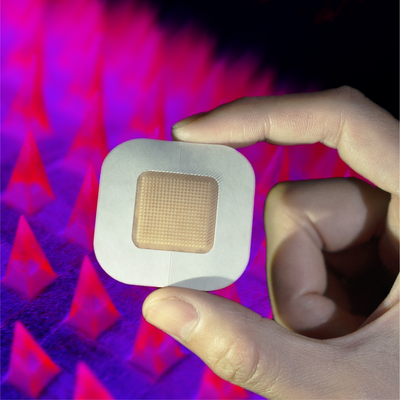Sewing with human skin, automatic insulin patch, babies and blood pressure, and more
07 Feb 2020
Posted by Andrew Kantor
Ragnarök Watch
With a handful of exceptions, the virus does not seem to affect children. Possible reason: They get a milder form.
Georgia’s Department of Public Health will be getting some coronavirus test kits.
The virus’s shares 80% of its genome with SARS. (While that may sound like a lot, consider that humans share 80% of their genes with mice.)
The nightmare coming true: Prada reports it’s closing some stores in China.
Regeneron Pharmaceuticals says it’s working on a treatment, and may not even charge too much for it.
South Korean docs report successful treatment using Kaletra (lopinavir and ritonavir) and antibiotics.
4 billion here, 4 billion there….
Just letting Medicare negotiate the price it pays for insulin — the way the VA does — could save taxpayers $4 billion a year. Even if Medicare simply paid the same prices as the VA, it would cut a huge chunk of spending:
Total spending on insulin for Medicare Part D [in 2017] was $7.8 billion after manufacturer rebates. If Medicare had been able to use the same prices negotiated by the VA, it would have saved $2.9 billion.
There is nothing creepy about this at all
French researchers are creating yarn out of human skin to use as surgical stitches or skin grafts.
Blood pressure and pregnancy
Hypertension: ‘Tis the season
Those shifty Danes have discovered an interesting correlation: Women who conceived in mid-summer have a higher risk of having a hypertensive disorder. In fact, the risk tracks nicely with the amount of sunlight during pregnancy.
Conclusion: “This may support the existence of an association between vitamin D and the hypertensive disorders of pregnancy.”
There’s a real long-term danger
Rutgers researchers have found that “Women with preeclampsia are four times more likely to suffer a heart attack or cardiovascular death.”
Tell them about it
A paper presented at a meeting of the Society for Maternal-Fetal Medicine found that hospital readmissions for postpartum hypertension can be reduced with a very simple tack: Tell them about it, i.e., “All Women Should be Educated After Childbirth About the Signs and Symptoms of High Blood Pressure.”
Continuous glucose monitoring in a patch
Bioengineers have created a once-a-day skin patch the size of a coin* that can both monitor and adjust a wearer’s insulin levels.
The adhesive patch [has] doses of insulin pre-loaded in very tiny microneedles, less than one-millimeter in length that deliver medicine quickly when the blood sugar levels reach a certain threshold. When blood sugar returns to normal, the patch’s insulin delivery also slows down.
* A really big coin, like the old Eisenhower silver dollars
Congrats to Cigna!
Shout-out to Cigna, which reported its profits almost doubled in 2019 to $5.1 billion, thanks in large part to its acquisition of Express Scripts. Even better, the company says it expects profits to reach at least $6.8 billion in 2020.
The Long Read: RNA editing
CRISPR is cool and all for editing genes, but what if you want to make an edit that’s less permanent, and less apt to have unintended side effects? Enter RNA editing — today’s Long Read.
In a nutshell, rather than changing cells’ DNA, RNA editing intercepts the messenger RNA and makes its changes there. The RNA delivers a different message, making a therapeutic change … a temporary one.
One researcher has a good example of the use of RNA editing:
[Editing] the mRNA for a gene encoding the sodium channel Nav1.7, which controls how pain signals are transmitted to the brain. Permanently changing the Nav1.7 gene through DNA editing could eliminate the ability to feel pain and disrupt other necessary functions of the protein in the nervous system, but tuning it down through RNA editing in select tissues for a limited amount of time could help to alleviate pain without the risk of dependency or addiction associated with conventional painkillers.




